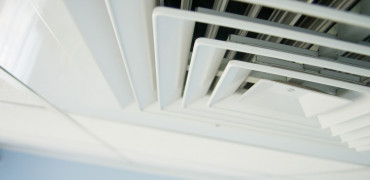A new survey of over 2,000 UK homeowners has found that 55% have experienced serious problems with poor ventilation leading to condensation, mould, and damp.
44% have also reported health related side effects including allergies, respiratory infections, poor sleep, low mood, and difficulty concentrating.
To address the issue, BESA (the Building Engineering Services Association) and Mitsubishi Electric have launched the ‘Mould and Damp Prevention in New and Existing Homes’ Guide during BESA’s sixth Annual Conference.
https://library.mitsubishielectric.co.uk/pdf/book/guide_to_mould#page-1
The guide is designed to educate landlords, tenants and homeowners about how to tackle damp and mould at the source, with straightforward steps and advice to help improve the indoor environment.
The free guide shows how to tackle damp and mould at source, with straightforward advice
A real cost to our health
In a forward from George Clarke, Architect and TV presenter, he explains that damp and mould can stop tenants and homeowners from feeling safe, happy and healthy in their homes.
“Damp and mouldy homes are a cost to all of us,” he wrote. “The NHS spends an estimated £1.4 billion annually on treating illnesses associated with cold or damp housing…and the World Health Organisation says that mould is so dangerous it does not set minimum ‘safe’ levels.”
More than half of the people surveyed have experienced serious problems with indoor air quality (IAQ) and poor ventilation leading to condensation, mould, and damp.
55% of respondents to a poll carried out by builder’s merchant Jewson said they had experienced IAQ and condensation issues in their homes in the past year – and 44% reported health related side effects including allergies, respiratory infections, poor sleep, low mood, and difficulty concentrating.
Mould in at least one room
The true scale of the UK’s domestic ventilation problems were revealed with 52% of the 2,000 homeowners reporting condensation problems, 26% saying they had mould in at least one room,
Addressing the issue today, the Building Engineering Services Association (BESA) and Mitsubishi Electric have launched the ‘Mould and Damp Prevention in New and Existing Homes’ Guide during BESA’s sixth Annual Conference.
The new guide has been designed to educate landlords, tenants and homeowners about how they can tackle the problems of damp and mould at the source, with straightforward steps and advice to help improve the indoor environment.
The issues around dampe and mould can cause physical symptoms from itchy skin to deadly lung disease, and even mental health impacts like depression and anxiety.
“Damp and mouldy homes are a cost to all of us,” wrote George Clarke. “The NHS spends an estimated £1.4 billion annually on treating illnesses associated with cold or damp housing…and the World Health Organisation says that mould is so dangerous it does not set minimum ‘safe’ levels.”
Clarke went on to point out that “good heating and ventilation are essential to healthy homes, but they must be affordable and useable for householders”.
Good news
The good news is that we already have the tools to make the improvements that could save lives and make these homes better places to live. This guide from BESA and Mitsubishi Electric highlights how we can tackle the problems of damp and mould at source with straightforward steps to improve the indoor environment.
BESA is urging local authorities, housing associations and other housing providers to make ventilation upgrades a key part of retrofit and refurbishment programmes. With up to £80 million of government funding being made available to social housing tenants to make their homes more energy efficient, the Association said this was an opportunity to take an ‘all round approach’ to tackling poor quality housing.
“There must be more joined up thinking to ensure addressing IAQ and condensation issues is factored in when insulation and other energy efficiency measures are upgraded,” said BESA technical director Graeme Fox. “We can, and we must, tackle mould and damp alongside the push for net zero carbon.”
Tell tale signs
In the guide, Mitsubishi Electric and BESA outline the challenges of spotting mould in homes, where mould comes from and how homes become damp.
It also covers four steps to creating mould-free homes, including:
- Tackle sources of dampness around the building
- Improve ventilation
- Improve heating.
- Make a home that people can live in
“We already have the tools and techniques to make improvements that could save people’s lives and make their homes a better place to live,” explained Oliver Collins, Channel Marketing Manager at Mitsubishi Electric, “We’re proud to launch this guide alongside BESA today, highlighting how challenges with damp and mould can be tackled and offering practical steps to do just that.”
For more information, follow this link to download the full Mould and Damp Prevention in New and Existing Homes’ Guide.
Oliver Collins is Marketing Manager for our Installer Partners




